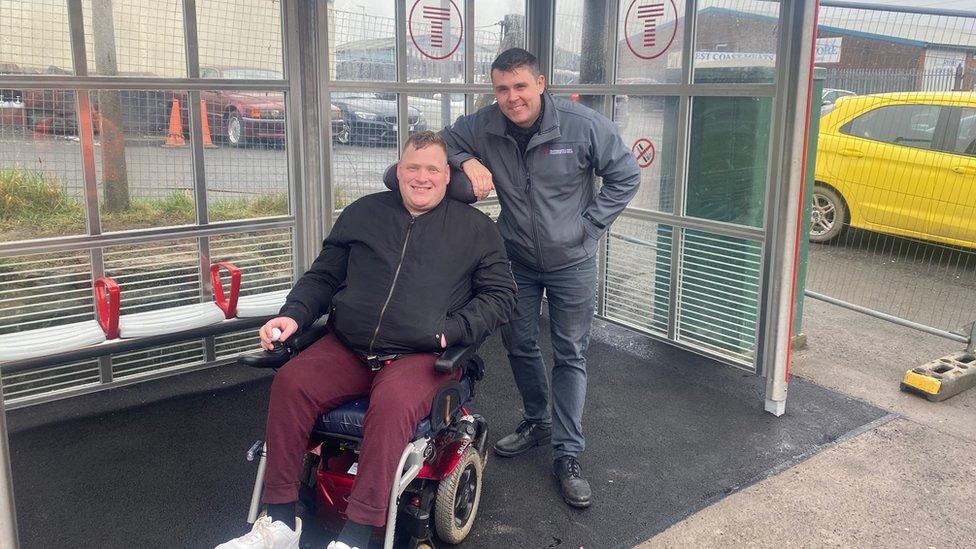Rail travel: How easy is it for all in Wales to access?
- Published

Joshua Reeves is still unable to access his local station more than three years after upgrades were announced
In 2020, four Welsh railway stations were included in a UK-wide programme to make them accessible to people with mobility needs.
So how is that plan going, three years on?
Under the Access for All programme, Llantwit Major, Neath, Pontypool and New Inn, and Grangetown were all put on the list for step-free access and other upgrades.
Llantwit Major, in the Vale of Glamorgan, and Neath have been finished, but three-and-a-half years later, Pontypool in Torfaen, is still not quite completed - despite an expected delivery time of summer 2023 - and no work at all has been done on Grangetown in Cardiff.
Three years ago, Joshua Reeves, a full-time wheelchair user with cerebral palsy, told BBC Wales not being able to use his local station at Grangetown made him feel "less human".
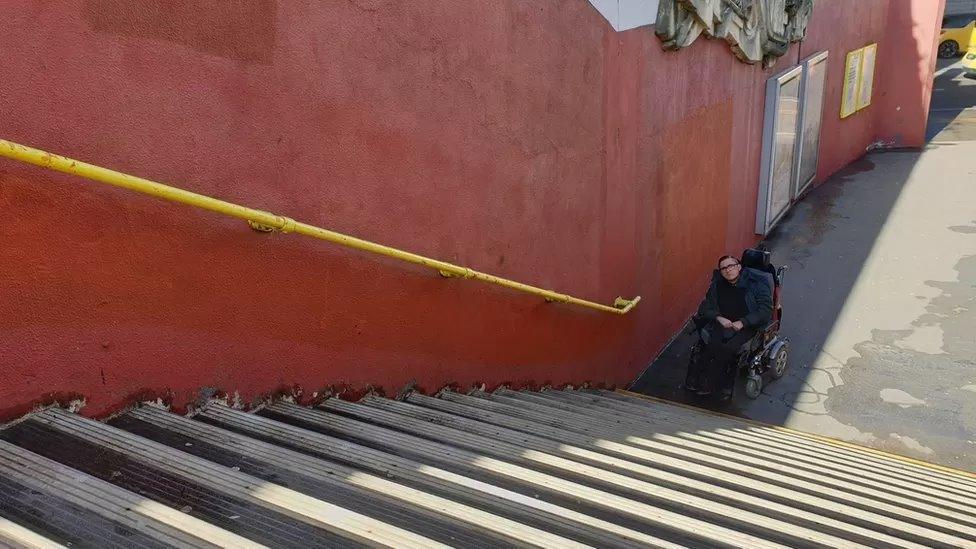
The access to Grangetown station remains the same as it was in 2020, although work on a lift design is due to start
For Joshua, who has been awarded a BEM for his work on disability rights and sits on Transport for Wales' accessibility panel, his local travel is no less difficult now than it was then.
The nearest station after Grangetown to his home in the Leckwith area is Ninian Park, which has ramps, but their steepness can be tricky to navigate, he said.
"I take buses and trains, but it's not doable when it's a Sunday and the buses aren't that frequent or don't run, so I have to rely on trains which I can't access at Grangetown," he said.
Network Rail said it was working on an outline design for the installation of a lift at Grangetown which should be ready by next spring, and work on construction would follow.
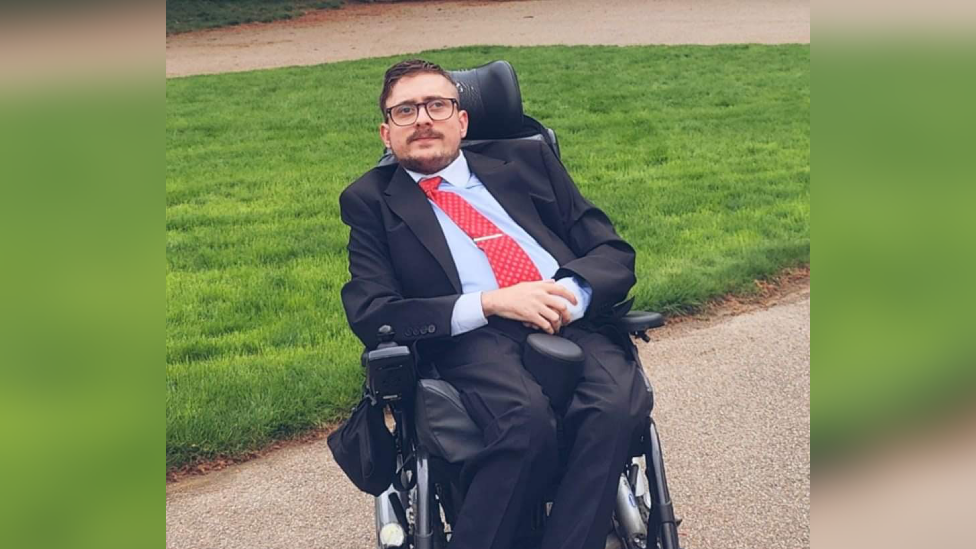
Joshua was awarded the British Empire Medal in the late Queen Elizabeth's honours for his work on disability rights
'All the horror stories you hear'
As part of his accessibility brief, Joshua travels around Wales assessing stations and said the situation is improving, including with the introduction of new trains which have integrated pop-out ramps, making it easier for wheelchair users to board trains independently.
However one area which is lacking is also lacking, aside from physical access, is information.
"It's not just information boards but information desks with staff who can help disabled people," he said. "A lot of stations that are in rural areas don't seem to have information desks."
Having access to information is key for some people before they can think about going to a station and can be a barrier in itself.
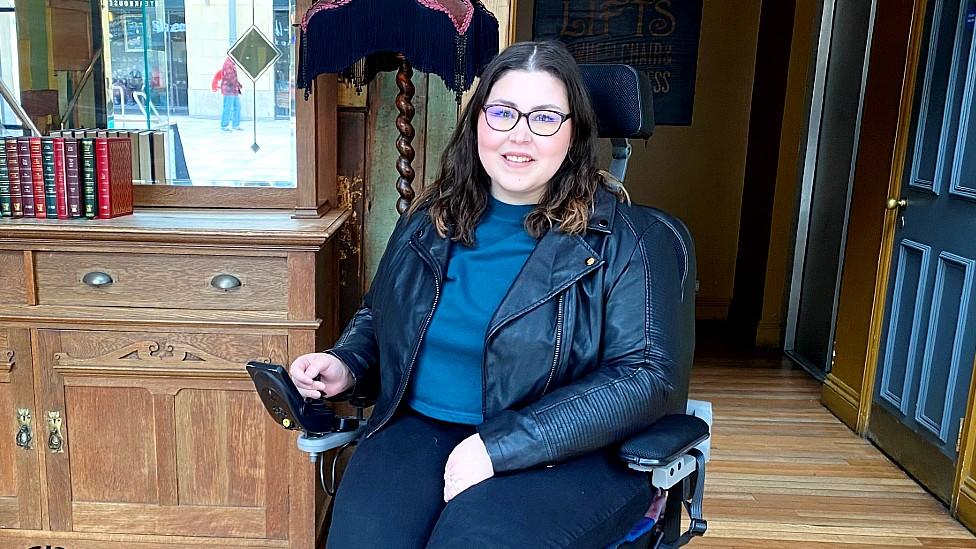
"I've lived in Wales for five years and I've never taken the train because I'm too scared to due to the accessibility," says Holly Greader
Train travel is not something Holly Greader, a wheelchair user, can even contemplate doing because of "all the horror stories you hear."
She said: "I've lived in Wales for five years and I've never taken the train because I'm too scared to due to the accessibility. I also feel overwhelmed by the idea of looking up different stations to understand their accessibility.
"Using a train would be really helpful for me. Being able to travel from Cardiff to Barry to visit my parents. Going from Cardiff to London would make my hospital appointments much easier and I would be less reliant on my fiance to drive me.
"I'd be able to meet my friends in London to see a show or another friend in Bristol so she didn't always have to travel to me."
Challenges
But is not just wheelchair users who can find unadapted stations hard work.
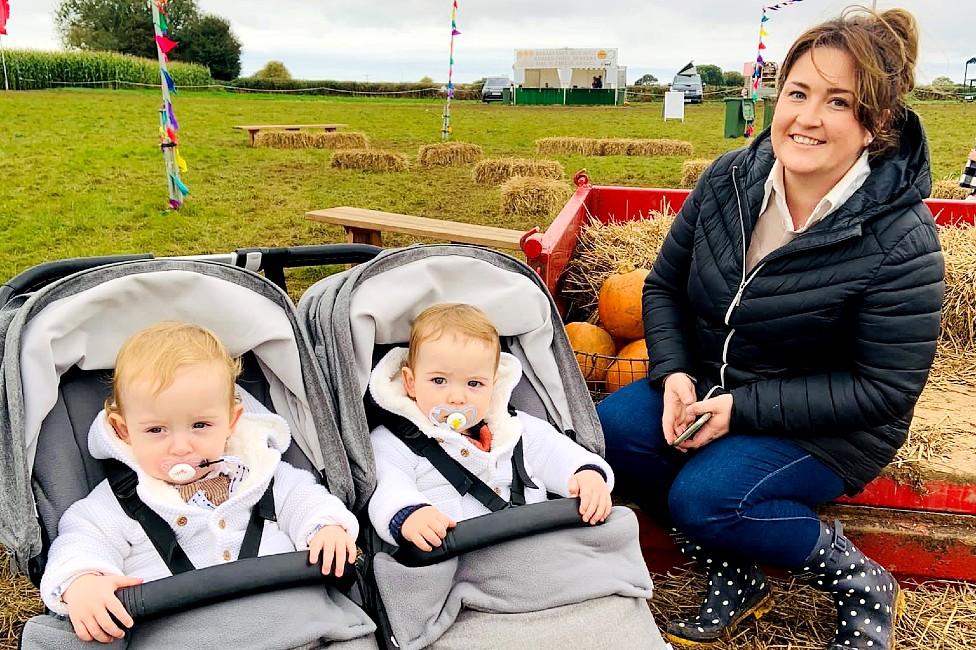
Lauren Hearne, with Noah and Niamh, could not use her local station with a double buggy until it was adapted
Lauren Hearne is a business development manager based in Barry, Vale of Glamorgan. Probably like most people, she did not consider how difficult moving around with two or more babies of the same age could be, until she became a mother to Niamh and Noah, now aged three.
She could not use her local train station with a double buggy unless she had help "carrying 40kg" because there was flight of stairs up to a raised walkway over the tracks to one platform.
She could take an outbound service on the accessible side but be stuck if she tried to catch a return service to the other platform.
However, there was a happy ending for her. Barry received a later round of Access for All funding, which saw a new footbridge with lift access on both sides installed.
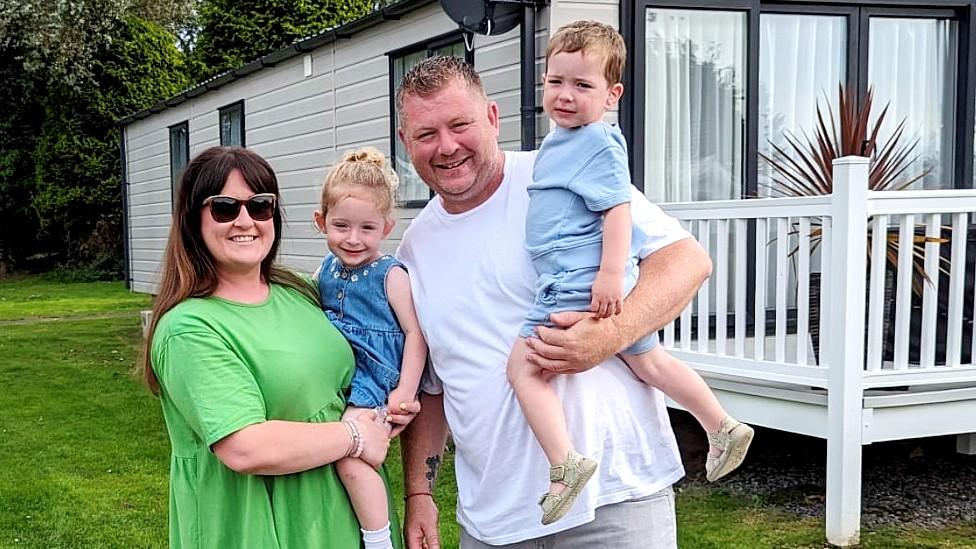
Lauren said people did not consider the challenges of travelling with twins or multiples
It means it is now possible for Lauren, or her parents, to use the train to take the twins into Cardiff or to Barry Island rather than relying on a car every time.
As chair of the Cardiff Twins and Multiple Birth Club, Lauren said the topic of train travel "most certainly does come up" on its online forum regularly, with people sharing advice or warnings about certain routes and destinations for accessibility.
While not equating having twins with those who have a disability, Lauren said there were additional hurdles with things like transport. "I've never thought of the challenges that you have as a [mother of twins] or multiple parent until I became one."
How many stations are fully accessible?
The picture on accessibility in Wales is complex. There are 223 stations and on an accessibility map, external produced by Network Rail, only seven are flagged as red, meaning no disabled access, usually because of steps leading to platforms, as at Grangetown.
But equally only 18 have green status, generally meaning fully navigable with ramps, lifts to access platforms or footbridges if necessary, accessible ticket machines and height adjusted ticket counters. Some, although not all, also have wheelchair-access toilets.
The others fall into the amber category, which could equally be called the grey area.
Some of these stations seem to have similar accessibility to the green ones - it's not clear to a casual observer why Bridgend, for example, which appears to have similar step-free and lift access and lifts to Cardiff Central, is on that list.
For others such as Ruabon in Wrexham, it is obvious that with only one platform having step-free access and an inaccessible footbridge linking the other, it is automatically a poorer service.
Network Rail said reaching full accessibility at all railway stations was dependent on funding and the nature of the site, as some were constrained.
A spokesperson said a range of measures including improved platform lighting and PA systems, accessible parking spaces and dedicated help points had been installed at Welsh stations.
Network Rail added: "We are improving accessibility at seven stations throughout 2023/24, including the installation of six brand new footbridges with lifts," adding that Barry and Cadoxton had already previously had this type of work completed.

BINGE-WORTHY BOX SETS: Everyone is talking about these award-winning dramas...
WYNNE'S WELSH 70S: Nostalgia and footage from Wynne Evans' favourite decade

Related topics
- Published29 February 2020
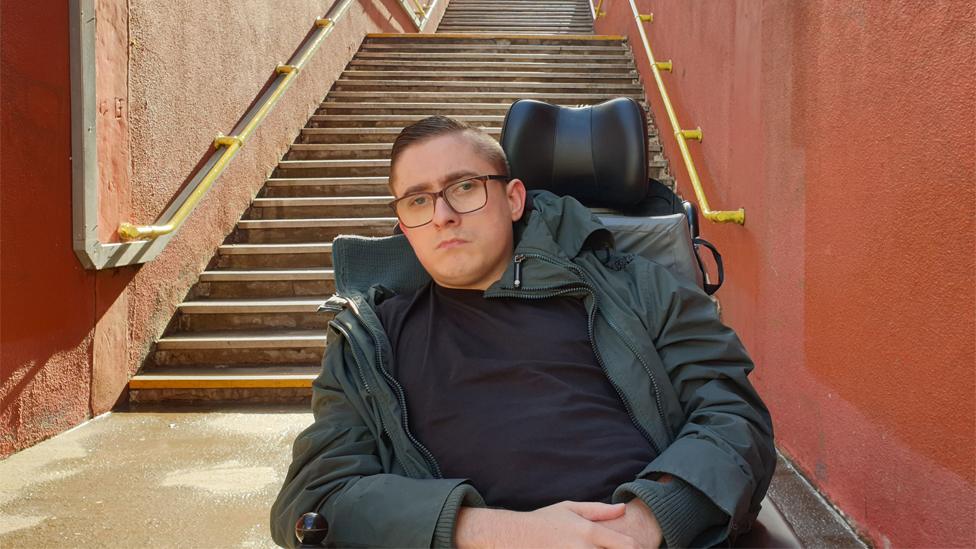
- Published1 May 2023

- Published27 February 2023
